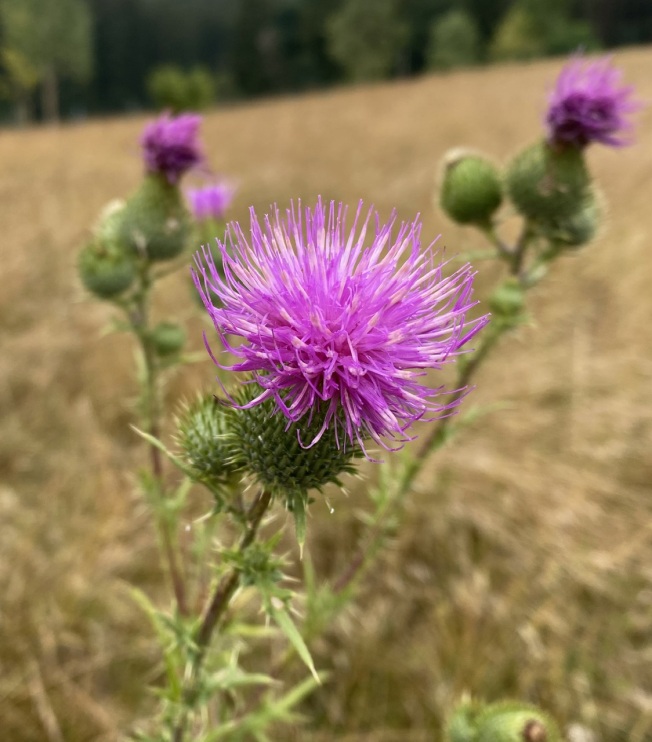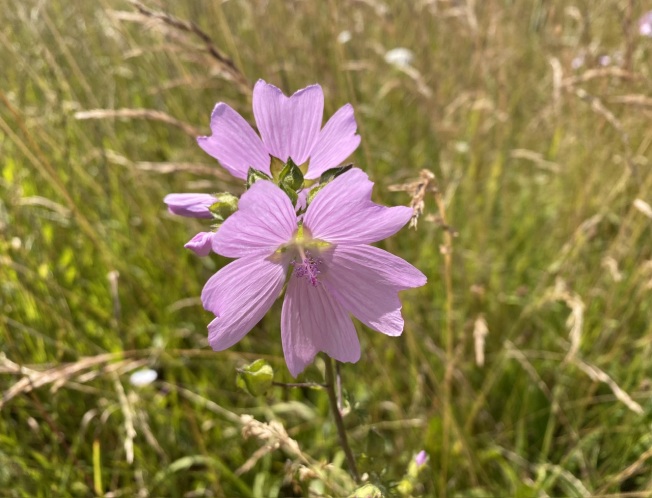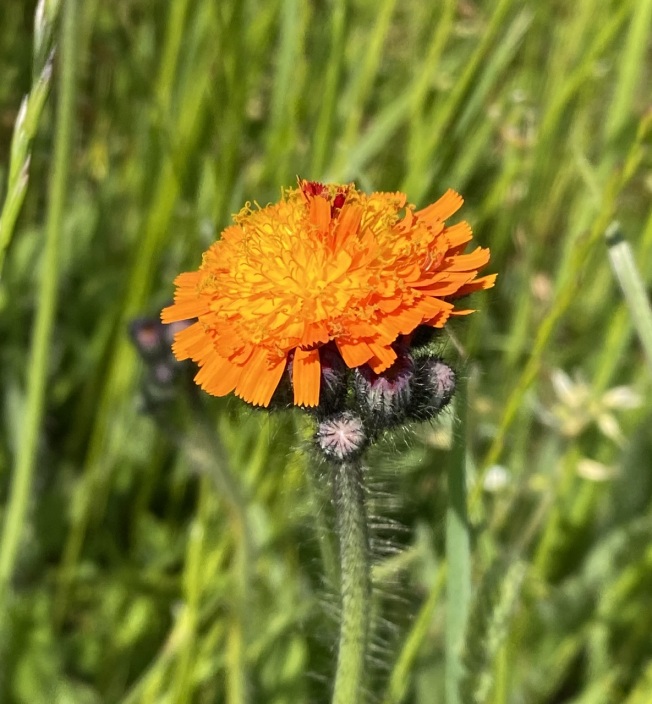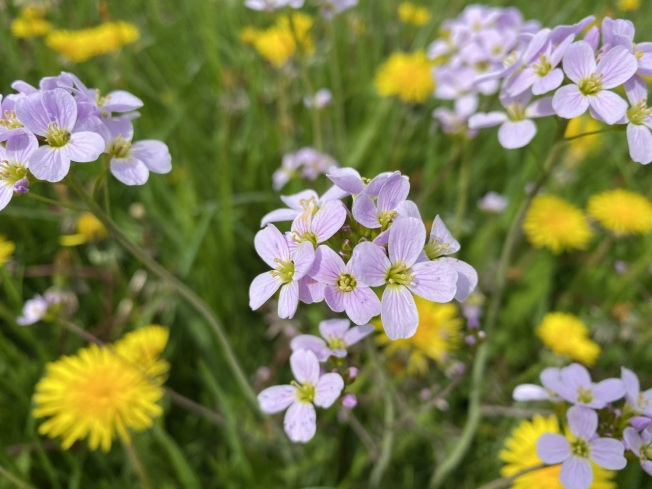In early May we noticed lots of wild forget-me-nots were growing in our meadow.
On closer inspection we have identified them as both Myosotis stricta and Myosotis discolor. They are very similar, only M. discolor, or Changing Forget-me-not, has both blue and creamy yellow flowers. Quite a suprise to me when I first realized!
The tiny flowers (incredibly difficult to photograph in the sunshine!) are even smaller than woodland forget-me-nots or the ones that grow in gardens. I actually picked some to get a closer look…
The stems are upright and long, and continue growing to produce more and more flowers.
They have been going strong for several weeks now in the open meadow, and every time it rains more open. I have read that they like sandy well-drained soil, which is obviously why they have spread here. I think they might be overlooked from a distance, but on our sloping meadow they do form a definite cluster of blue.

There are wild forget-me-nots in the woods too, more like the garden varieties. Have you ever found any sort of wild forget-me-nots?
Do join me on a Wednesday if you would like to share a wild flower or weed that grows in your garden or nearby. And remember to leave a link below. 😃
Have a wonderful week!

























































